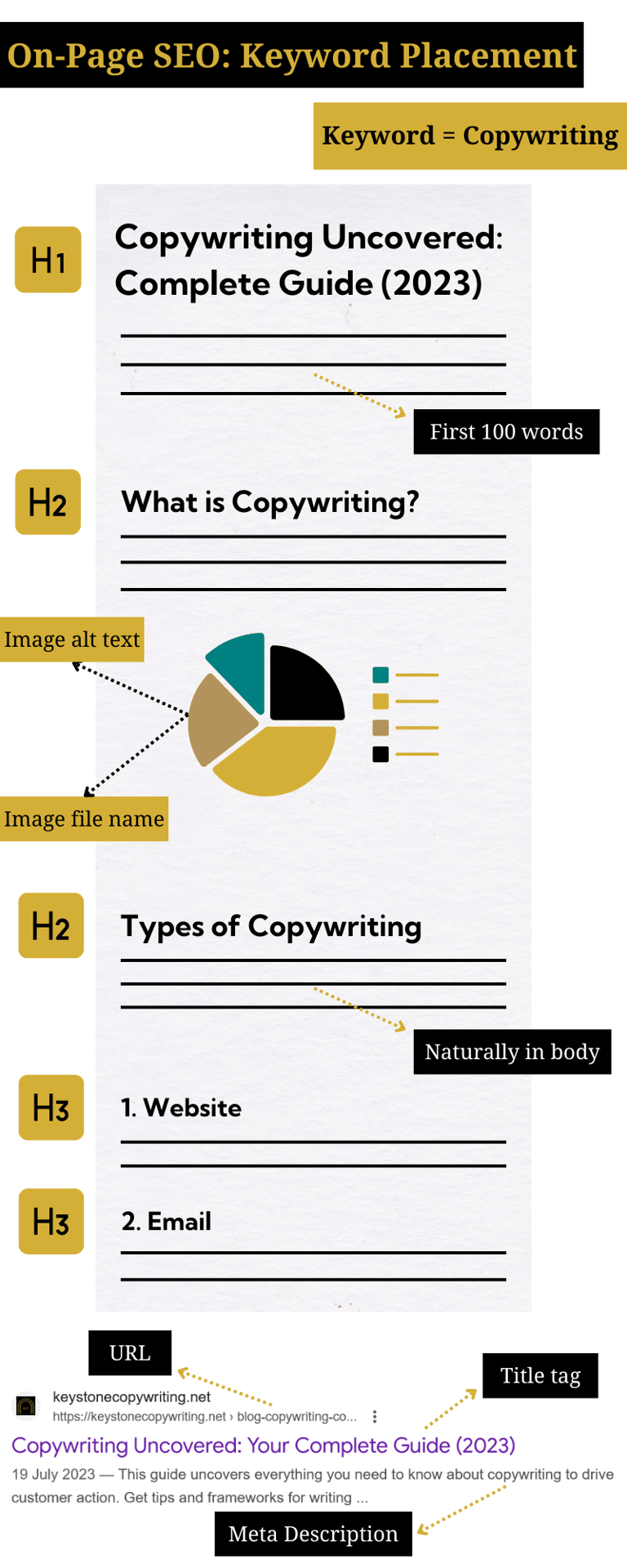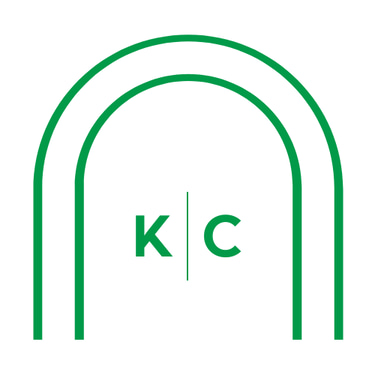SEO Copywriting Australia: Your 10 Steps to Business Growth
Grow your business in Australia with these 10 SEO copywriting steps. Expert tips with original examples. Grab attention online and close sales.
COPYWRITING


Hey, Australian small business owner. You looking to build your online presence and attract more customers?
If you’re anything like me, of course you are. So, you need effective SEO copywriting in Australia.
Let’s explore the 10 steps of SEO copywriting you can use for your Australian small business. These will help you boost your search engine rankings and connect with your readers.
Imagine this for your website:
Ranking higher in search results
Attracting interest in your services
Converting readers into customers
It’s time to harness the power of SEO copywriting to grow your business in Australia.
1. Keyword Research: Finding Your Tribe
Keyword research is the place to start. You want to identify the words and phrases your target audience uses when searching for anything related to your business.
You can't afford to guess which keywords to target. It’s like looking for a lost contact lens in the dark.
Instead, conduct a thorough analysis to find your tribe. Keyword research lights your path to SEO copywriting success.
Brainstorm relevant industry keywords.
Use a tool like Google Keyword Planner to check them.
Note search volume, competition difficulty, and related keywords.
Create a list of target keywords for your small business.
Low competition and good search volume.
Long-tail keywords, longer and more specific phrases, are helpful for small businesses. They often have less competition and attract highly targeted traffic.
Keep an eye out for some of these. Because people searching for them can be close to buying.
Long-tail keyword example: “How much does it cost for a plumber to snake a drain”
The below screenshot from Ahrefs shows it’s an easy keyword with decent search volume in Australia.




Plumbing businesses in Australia should target this long-tail keyword with SEO copywriting. People searching for it are close to buying.
Keyword research is an ongoing process. Regularly revisit and update your keyword strategy to stay relevant and competitive.
2. Irresistible Headlines: Grabbing Attention Straight Away
Headlines are your first chance to make an impression. Make it an outstanding one and seize the reader's attention.
An irresistible headline shows what's to come, touches on a benefit for readers, and encourages them to delve deeper into your content.
An effective headline for SEO copywriting includes your target keyword. But you also need to grab attention and inform readers about the content.
Consider the following techniques:
Apply numbers
Use vivid language
Ask readers questions
Create a sense of urgency
For instance, let’s say you run a small bakery. You’re writing a blog post about healthy breakfast muffin recipes.
Check the image below for an avoidable headline and an irresistible one.
More on title tags and meta descriptions to come.
5. Readability: Making Content Digestible
Readability is a critical element of SEO copywriting. Your content should be easy to read and understand, catering to human readers and search engines.
To enhance readability use:
Clear Language: Avoid jargon and overly technical language unless your audience is highly specialised.
Short Paragraphs: Break up long paragraphs into shorter, easily digestible segments.
Subheadings: Use subheadings to divide content into logical sections. It helps readers skim for relevant information.
Bullet Points and Numbered Lists: Great formatting makes information more accessible and scannable.
Concise Sentences: Keep sentences concise and to the point. Avoid unnecessary fluff. Be careful here, though. Because too many short sentences in a row sounds robotic and gets boring.
Readers usually scan web content before committing to a full read. Well-formatted, scannable content improves user engagement and encourages visitors to stay on your page longer, signalling to search engines that your content is valuable.
6. Internal and External Links: Navigating the Web
Using internal and external links in your copywriting is crucial for SEO. It enhances the user experience and provides valuable context to readers and search engines.
Internal Links
These links direct users to other important pages within your website. They help readers navigate your site, discover related content, and establish a hierarchical structure.
For example, I use internal links in my blog posts. Copywriting is one of my main services, so I link to my copywriting service page from blogs related to copywriting.
Also, I link internally between blogs about copywriting on my website. For instance, “Copywriting Uncovered: Your Complete Guide (2023)” and “Writing Website Copy: 15 Actionable Tips (Original Examples)” link to each other internally.
I use the hub and spoke method for internally linking my blog articles. Start with one core topic (hub content) and build subtopics (spokes) around this.
Copywriting is my core topic. And I target subtopics around it.


Hub content should cover everything about the core topic. The spoke content then delves into the subtopics in more detail.
External Links
External links, on the other hand, lead to reputable sources outside your website. When you cite credible sources or reference authoritative information, it adds credibility to your content. It also provides context for search engines to understand the topic's relevance.
For instance, I linked to a SurveyMonkey article above. It bolsters my point about the impact of spelling and grammar while signalling relevance to Google.
Using both internal and external links in your content can boost its value and authority. But avoid excessive linking because it’s distracting and overwhelming for readers, and Google can penalise you for spammy content.
7. Meta Tags: The SEO Signposts
Meta tags provide information about your web page to search engines and potential visitors. Two key meta tags you need to optimise are the title tag and meta description.
Title Tag
This tag serves as the title of your web page in search engine results and browsers. It should be concise, descriptive, and contain your target keyword.
An ideal title tag should be under 60 characters so it displays fully in search results.
My title tag for this blog is “SEO Copywriting Australia: Your 10 Steps to Business Growth.” It’s under 60 characters, tells readers what the blog is about, and hints at how they can benefit.
Meta Description
The meta description offers a summary of your web page's content. It appears below the title tag in search results.
Craft a compelling meta description that includes your target keyword and entices users to click through to your page. While it doesn't directly affect rankings, a well-crafted meta description can improve click-through rates.
Keep meta descriptions under 160 characters - aim for between 120 to 156.
Optimising these meta tags ensures search engines understand your content and present it effectively in search results. It also encourages users to click on your link, increasing the chances of attracting organic traffic to your website.
8. Mobile Optimisation: Reaching Phone Browsers
Who doesn’t use their mobiles to search online these days? So, you need to ensure your website content is mobile-friendly.
Mobile optimisation involves making your website responsive on phones. It should adapt to various screen sizes and resolutions.
Responsive design helps your content display correctly. It makes navigating your content on smartphones and tablets easy.
Search engines now prioritise mobile-friendly websites in their rankings, so neglecting mobile optimisation can impact your SEO copywriting efforts. And a poor mobile experience drives visitors away from your website - no bueno.
You can use Google's Mobile-Friendly Test to check your website. If your site isn't mobile-optimised, it’s best to sort it out ASAP.
You could be losing sales if your website has a terrible user experience.
9. Image Optimization: Pictures Worth 1000 Words
Images are a valuable addition to your content arsenal. They break up the text, enhancing visual appeal and engagement.
But you need to optimise them for your SEO copywriting in Australia.
Image optimisation includes two main components:
Descriptive File Names
Descriptive Alt Tags
Descriptive File Names: When you save an image, use a descriptive file name that reflects the image's content. Let’s use our healthy breakfast muffin recipe blog example again.
Which image file name is more relevant and informative?
Healthy-breakfast-muffins.jpg
Image123.jpg
The first one helps search engines assign relevance to the image. So, it helps your SEO efforts.
Descriptive Alt Tags: Alt tags (or alternative text) provide a textual description of an image. They serve multiple purposes:
Help visually impaired users understand the image
Provide relevant context to search engines
Display if an image fails to load
Alt tag example: Healthy breakfast muffins on a white plate.
Including your target keyword in alt tags, when relevant, helps users and can boost SEO.
Incorporating optimised images makes your content more engaging and improves your chances of appearing in image search results. That can drive additional traffic to your website.
10. User Experience: Keeping Visitors Engaged
User experience (UX) plays a significant role in SEO copywriting for your Australian business. A positive user experience can keep visitors engaged, reduce bounce rates, and signal to search engines that your content is valuable.
Some UX considerations:
Page Speed: Slow-loading pages frustrate users, causing them to click away. Optimise your website's speed by compressing images, using efficient code, and leveraging browser caching.
Minimal Intrusive Ads: While ads can generate revenue, too many ads or intrusive ones detract from the user experience. Take a balanced approach.
Mobile Optimisation: You already know the importance of a fully responsive website for a seamless experience on mobile devices.
Navigation: Make it easy for users to find their way around your website. Clear menus, logical categories, and intuitive navigation enhance the user experience.
Accessibility: Ensure your website is accessible to people with disabilities, including those using screen readers. Accessibility broadens your audience and is also an ethical consideration.
An outstanding user experience creates a more enjoyable environment for your website visitors. It can lead to longer visits, more engagement, and improved search engine rankings.
Conclusion: The Path to SEO Copywriting Success
Following these 10 steps will improve your small business SEO copywriting in Australia. It can have a profound impact on your online presence.
Imagine your website ranking higher in search results, attracting the right audience, and converting visitors into loyal customers.
Today, the art of SEO copywriting is not just a strategy – it's a necessity. Your Australian small business can navigate the competitive online landscape with effective SEO copywriting.
Ready to unleash SEO copywriting for your small business?
Check out our copywriting services for Australia to connect with readers, captivate their interest, and convert them into customers.
Not sure what services are best for your business? Reach out for a no-obligation consulting call to discuss your needs.


The best headlines are clear, concise, and aligned with the content that follows. They provide a glimpse of the value your content offers, encouraging readers to click.
3. Quality Content: The Backbone of SEO
Quality content is at the heart of SEO copywriting. It keeps readers engaged, builds trust, and encourages them to take action.
Making a purchase
Subscribing to a newsletter
Or simply sharing your content
For small businesses in Australia, producing high-quality content showcases your expertise and provides value to your audience. Any content you pump out should be informative, well-researched, and free of spelling and grammatical errors.
The last point can have a massive impact on the success of your small business SEO copywriting in Australia. According to SurveyMonkey research, copy with spelling/grammatical errors has the following effect on buying behaviour:
Millennials are 85% less likely to buy your product
Women are 81% less likely to buy it
Men are 77% less likely to buy
So, your small business can’t afford to be slack with spelling and grammar.
Also, consider your target audience's pain points and objections. Your SEO copywriting should address these effectively.
Show readers…
What you do
How they benefit
Reasons to trust you
The next step they can take
You won’t go too far wrong if you focus on your customers and their ideal outcomes.
4. Keyword Placement: The Art of Balance
Once you've done keyword research, it's essential to strategically place those keywords within your content. Achieving the right balance is crucial.
You want to optimise content for search engines without sacrificing readability and the natural flow for readers.
Here are some key places to include your target keywords:
Title: Place the keyword near the beginning of your title, ideally within the first 60 characters.
Introduction: Include the keyword naturally in the first 100 words to establish relevance.
Subheadings: Use keywords in subheadings (H2, H3 tags) where relevant to outline your content.
Body Text: Organically integrate keywords around once or twice per 500 words. Avoid harming your SEO efforts with keyword stuffing.
Conclusion: It's a good practice to include the keyword again in your concluding paragraph if it fits naturally.
Don’t insert keywords haphazardly or stuff them into every sentence. It affects the readability and angers the Google Gods.
Always put readers first and ensure your content is informative and valuable to them. The goal is to strike a balance between SEO optimisation and user-friendly content.
Follow the below guide for the best keyword placing practices.
Image created by author
Graphic created by author
